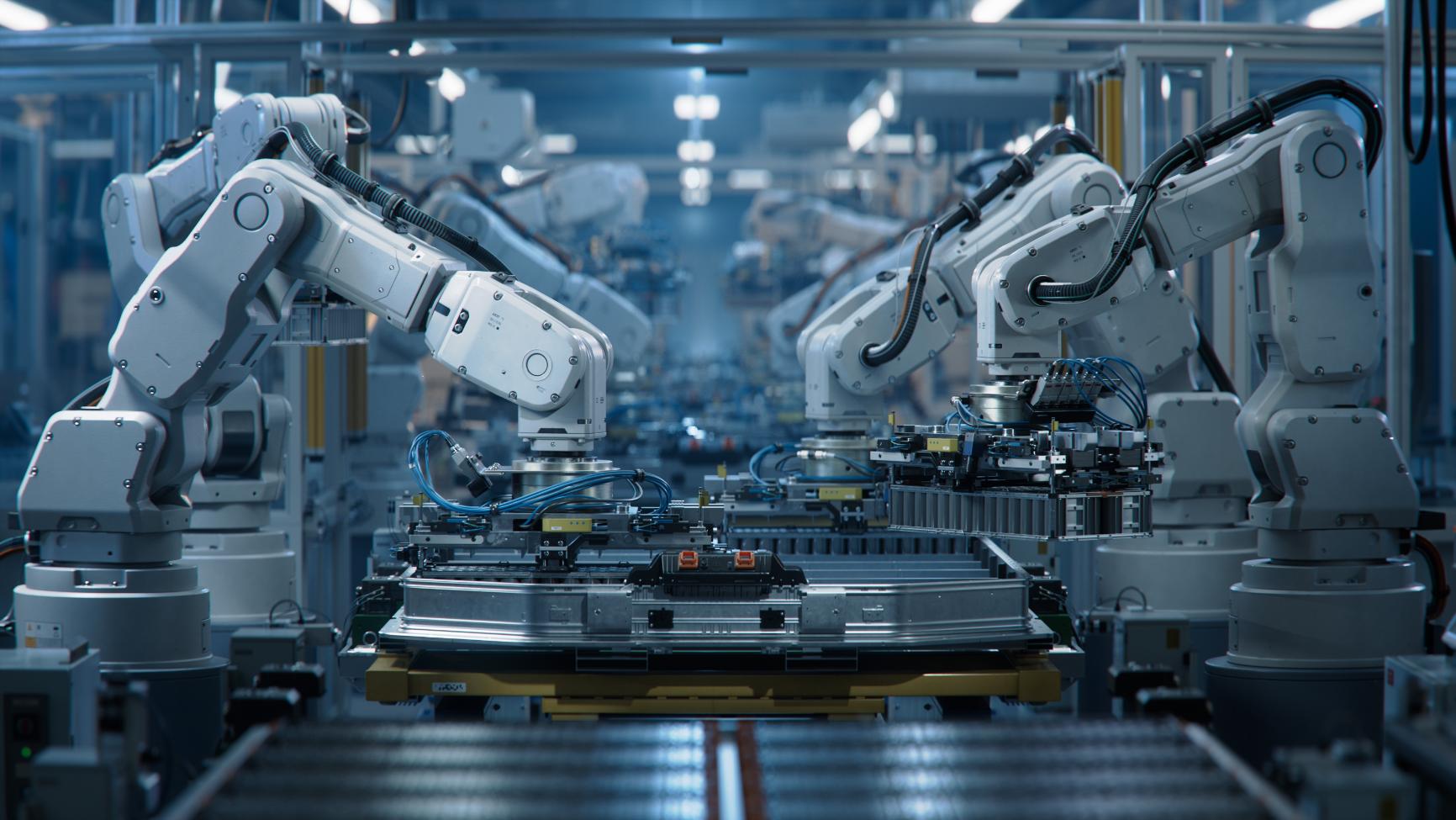As enterprises look for ways to streamline process and remove functional silos, hyperautomation is the latest strategic technology trend that offers the best approach to attaining end-to-end automation. Unlike traditional automation, this approach uses cognitive technologies capable of driving more flexibility and adaptability.
In 2021, Gartner estimated that the hyperautomation market will reach $596.6 billion in 2022, up from $481.6 billion in 2020. Well, despite the past couple of years being fiscally challenging, the sector’s growth has been relentless, and as a matter of fact, it was reported that 85% of Gartner clients were willing to sustain or increase their hyperautomation investment strategies in 2022.
Gartner’s predictions further reveal that increased pivoting toward hyperautomation will drive 80% of large enterprises to focus more on composability. Consequentially, it would be easier to deploy operations and businesses will rapidly gain efficiency. The company expects that by 2024, businesses combining hyperautomation technologies with modified processes will reduce their operational costs by 30%.
What is hyperautomation?
Hyperautomation, a term coined by Gartner in 2020, is a business-driven approach that uses multiple technologies, platforms, or tools to identify, analyze, and automate a wide range of IT and business processes. This disciplined approach is used to automate tasks and processes traditionally performed by humans by introducing technologies such as robotic process automation, machine learning, and artificial intelligence. It’s currently vital in building fluid, high-performance businesses that can rapidly adapt to change.
Hyperautomation vs. automation: differences
Automation removes manual workloads and interventions in IT. Processes are performed within a computer, eliminating reliance on human effort in handling high-volume iterative operations. It instead introduces robotic process automation (RPA) bots. While automation is important for digitalization, businesses have been aware that enterprise RPA tools have serious limitations—most importantly, their inability to use unstructured data inputs to automate processes.
Hyperautomation provides a holistic approach to end-to-end process automation. It solves unstructured data issues, taking the benefits of automation to a new level.
Thus, hyperautomation and automation are cut from the same cloth, but the former features a layer of more sophisticated technology, allowing it to do more. Notable differences between hyperautomation and automation include:
- Outcome: automation leads to efficient operations, while hyperautomation leads to smart, efficient operations.
- Technology: automation is task-oriented and based on RPA, while hyperautomation involves multiple technologies chained together.
- Scope: automation is only conducted from a single platform, while hyperautomation involves a network of systems, technologies, and platforms.
- Degree of coverage: hyperautomation can automate everything, but automation can only be applied where it’s relevant.
Read more on low-code development:
Unleash your superpowers with new Power Platform AI capabilities
Is low-code development a panacea for the tech talent shortage in 2023
Power Automate flow with Teams: how to optimize the approval process
How to build a customer service chatbot with Microsoft Power Virtual Agents
Low-code app development—a trend for 2022
Digital process automation with low-code platforms—5 typical use cases
AI Builder–artificial Intelligence for knowledge workers
Microsoft’s Power Virtual Agents: for highly capable chatbots
How you can streamline your business process with Power Automate
What is Microsoft Power Platform—an overview of the main features
Technologies needed for hyperautomation
Hyperautomation is a broad term that consists of various building blocks. The end-to-end automation discipline includes technologies such as RPA, artificial intelligence, and natural language processing.
Artificial intelligence (AI)
AI is a key hyperautomation driver that focuses on the creation of smart machines that can handle tasks that would previously require human intelligence. This technology is what makes hyperautomation different from traditional automation efforts. AI uncovers and automates processes and data that were previously inaccessible, leading to the formulation of the digital twin of the organization (DTO). It should be noted DTO enhances the identification of previously unseen interactions between various business functions and processes, resulting in better problem-solving.
Robotic process automation (RPA)
Robotic process automation software technology is designed to enhance the building, deployment, and management of software robots that imitate human behavior as they interact with digital systems.
RPA is ideal for automating repetitive business processes as software bots can understand content on digital screens, navigate systems, perform the right keystrokes, and identify or extract data. Such automation technologies enhance efficiency in various business operations such as pricing, billing, procurement, and system maintenance as they work significantly faster than humans and operate around the clock.
Machine learning (ML)
Machine learning algorithms continuously analyze data inputs and identify patterns used to develop more accurate predictions. Computers can use this information to make better decisions and perform complex tasks with little human input.
Natural language processing (NLP)
Natural language processing algorithms can understand audio files and written text and can effectively interpret communications quickly. Since NLP can be used with written and spoken inputs, it’s associated with intelligent document processing, chatbots, and voice recognition. Modern NLP provides a new, improved way of handling processes and enhancing operational efficiency, consequentially accelerating hyperautomation efforts.
Low-code platforms
Low-code platforms are visual software development environments used by citizen and enterprise developers with little to no coding skills to create apps and automate business processes. As companies focus on their digital transformation journeys, using low-code solutions with RPA and digital process automation is important in attaining hyperautomation goals. Low-code solutions are the backbone of hyperautomation as they give business teams more power to operate faster and smarter. As a result, they empower IT and business teams to quickly build applications and collaborate while helping organizations save time and money.
Benefits of hyperautomation
Hyperautomation helps to extend the core automation operations of organizations by employing advanced technologies such as NLP and RPA. The sophisticated integration between operations and system processes and systems provides businesses with benefits such as:
#1 Enhanced digital process automation
In order to meet their digital transformation goals, modern businesses are constantly trying to identify automation opportunities. Foundational hyperautomation technologies are designed to support the automation of business activities. It’s a high-speed approach that’s business-driven in all aspects and applies a disciplined digital approach that companies can use to effectively identify, analyze, and automate a wide range of processes. It can automate more complex tasks by simply relying on data input.
#2 Agility
Intelligent business process management leads to business agility and may liberate humans from handling almost any repetitive task. Gartner predicts that by 2024, 69% of repetitive tasks currently performed by managers will be automated.
Intelligent process automation can be used to handle and expedite routine tasks such as procurement, data entry and extraction, payment and claims processing, invoicing and billing cycles, and supplier management.
It should be noted that using RPA’s intelligence leads to an upskilled digital workforce that can efficiently handle monotonous tedious tasks as well as augment employee performance. Besides that, digital workers offer seamless integration between various business processes, operate using both structured and unstructured data, and analyze the data sets for process mining.
#3 Lower costs
Hyperautomation is a low-cost approach that eliminates the operation steps applied by human workers. It creates an optimized system that eliminates poor human capital coordination and minimizes labor-intensive and mundane work while guiding stakeholders in the right business direction that guarantees them lower costs and business growth. Overall, hyperautomation can quickly solve complex business problems with few operations and lower support costs.
#4 Standardized business processes
Process automation leads to fewer or no errors. This means that business tasks can be fully standardized, an important factor for auditing. With standardization, an audit train containing maintenance records can be created. As a result, businesses can always stay audit-ready, without being subjected to major hassle.
#5 Better business decisions
Intelligent automation is designed to complement human knowledge for improved business decisions. Decentralized business processes often lead to bad decisions due to the absence of data coherence from various automated tools. The significant margin of error normally interferes with management-level decisions, making them inefficient and difficult to handle. However, using AI-based systems in combination with automated systems with a centralized nature used in process mining leads to better decisions and predictions.
#6 Improved data storage and accessibility
Hyperautomation is developed on the premise of an operation that requires integration of processes and software, leading to seamless interactions between on-premise infrastructure and data storage. Modern advanced technologies have made the hybrid cloud the new normal, and so integration of systems has become vital in digital transformation. So, such a design can allow systems to effortlessly connect and communicate, leading to better data accessibility from centralized storage.
#7 Better customer experience
Hyperautomation approaches can handle time-consuming work, leaving employees to fully focus on customers. As a result, they can provide them with customized solutions that effectively cater to their needs by understanding their preferences.
#8 Team collaboration
Hyperautomation enables improved team collaboration since it can connect everyone and everything. As part of business transformation, it involves everyone and connects to operations, data, and processes. All users across the organization can easily collaborate as facilitated by the combination of robots, RPA, and intelligent tools.
Conclusion
As organizations focus more on digitalization, operational excellence, and growth, there has been a need for more efficient and more widespread automation that combines robotic process automation with artificial intelligence and machine learning tools. This strategic technology trend allows businesses to move from labor-intensive tasks to intelligent, ruled-based processes.
Hyperautomation approaches expected to shape the market in 2023 include increased use of low-code/no-code tools, digital twins, and mass-market robotic process automation. By combining AI with automation, enterprises will stand a better chance of focusing on more innovative solutions that reliably address ever-changing market requirements.










